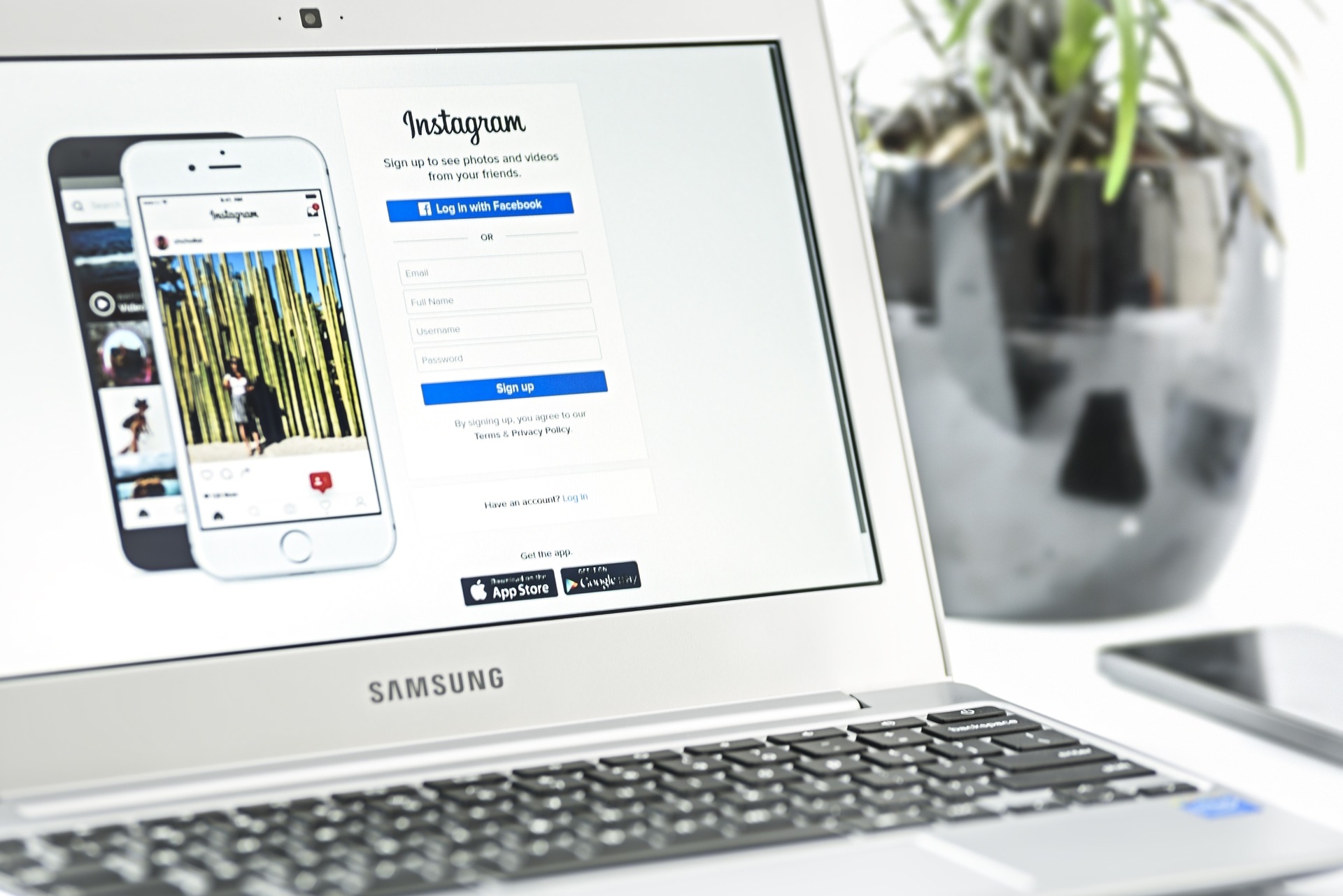Are you planning to start promoting your startup? If so, you are probably staring at your internet browser and potentially hundreds of different websites you could sign up for, wondering which ones you should start with, which ones you should actually be active on, and so on and so forth.
Not to mention, you’re probably wondering how long it’s going to take to actually get listed on the sites, how to approach them, and how to speed up the process.
If this sounds like you, then you’re in the right place. This isn’t just a directory of websites where you can list your startup. This is a guide for how to get out the word about your startup in the most effective way possible, from process to places.
Prepare To Build Your Startup’s Brand
I’m going to preface this with the fact that, at first, it may look like a lot of work. You might be thinking, “Get me to the list of places to submit my startup already.” But, trust me when I say this, if you do the prep work, getting your listings done right the first time will be a much simpler, more efficient process that will save you time and effort. Also, I use the term “listings” to encompass profiles, pages, entries, biographies, etc., as each network refers to them differently.
Get Your Website Live
If you don’t have your startup’s official website live yet, now is the time to get one online. Even if it’s just a domain with a simple “coming soon” page that gets people excited enough to enter their email address to be notified when you launch, that’s fine. You need your website up, as your website link will be needed on just about every listing you create.
And, you don’t want to create hundreds of listings just to have to go back and add your website later. That would be a huge waste of time.
Plan To Create Two Types Of Listings
Building your startup’s presence online isn’t just about creating listings for your startup itself. In most cases, depending on the network you are creating the listing on, you will need a listing for the startup itself and the founders, CEOs, and other key people involved in the startup.
For purposes of this guide, we’ll just focus on the startup and one key person (the founder). Assume that if there are more key people in your startup, they will also need to create listings that are suggested for the founder.
Check Your Usernames
KnowEm is your go-to resource for usernames. Before you start creating listings, start by making sure that a common username is available on the most popular sites. This will ensure that you can create a strong brand for yourself and your startup. You want to be…
twitter.com/apple
facebook.com/apple
linkedin.com/company/apple
You don’t want to be…
twitter.com/apple_
facebook.com/applestuff
linkedin.com/company/appleinc
As a basic rule, you can have up to 15 characters for a Twitter username, so try not to go over that. Then, run usernames for yourself and your startup through KnowEm, which will tell you pretty quickly if they are available as usernames on the top social networks.

If you see Available for each one, you’re probably good to go. If you see a few with Available crossed out, you might want to independently check the network by plugging in your username with the common URL. In this case, you’d check www.linkedin.com/company/mystartup135 to see if that URL actually exists. If it doesn’t, you’re probably ok. KnowEm’s search is good, but not 100% perfect.
This should ensure that you’ll get listings for your startup and yourself under names that are as close as possible to the names you want.
To be completely thorough, click on the Social Networks tab and check your usernames against all the networks in each category. This will check your desired usernames on hundreds of networks in minutes.
Write Your Profile / Listing Copy
Now, you’re ready to start doing some of the work that will make the rest of the process more efficient. I want you to open a simple text document on your desktop. In that text document, I want you to create two sets of copy. One will be for your startup and one will be for you.
The purpose of this copy is to keep you from having to type in the same information over and over and over again. Most listings will ask for the following information:
- Name
- Username
- Location
- Website Link
- Headline / Tagline
- Short Bio / Description
- Long Bio / Description
- Links to Other Social Profiles
Some networks will ask for more, some will ask for less. If you have a text file with this copy ready to go, you will be able to set up your listings much faster. Not only that, but your listings will be much more consistent and present a better brand altogether.
The amount of space you will have for each of these fields and the way you may want to use them will vary based on the network. For example…
- The LinkedIn profile tagline will allow you 120 characters, but in many places will get cut off at 75 characters.
- The Twitter bio is 160 characters and can contain clickable links to other Twitter handles using their @username and clickable URLs using just the domain.com.
- The Facebook page short description is 155 characters and can contain clickable URLs using just the domain.com.
- Long bios and descriptions on a lot of networks will allow you to write novels. You may just want to write a paragraph or two that quickly gives a good first impression of yourself and your startup.
These are just some things you will want to keep in mind. Have a basic template, but be ready to do a little extra customization on some networks for some bonus functionality. We’ll let you know throughout the guide when this can come in handy.
Create Profile And Cover Photos
Just about every listing you create will ask for a profile photo, and many will also ask for a cover photo, also referred to as header images, banner images, channel art, etc. Below, for example, you can see the use of the Crazy Egg logo as a profile photo and the use of additional artwork with the text “Visualize where your visitors click” as a cover photo on a Facebook page.

You will need a profile photo and cover photo for both yourself and your startup. For you, the profile photo is a professional headshot. If you can’t hire a photographer to take one of you (local pros will do it for anywhere from $125 – $500), you can follow this guide or this guide on DIY headshot photography with your iPhone.
For your startup, the profile photo is usually a logo. Hopefully, you already have one. But, if you don’t, you have several options. If you need one immediately because you want to start getting your listings up now, try Fiverr. With upgrades, you can get a logo design turned around in 24 hours. If you have a couple of weeks, you can go with services like 99designs where different designers will compete for your business through a design contest.
As for the cover photos, unfortunately, one size does not always fit all. Every network that allows a cover photo has different sizing requirements. For example:
- The Facebook Cover Photo image size is 851px by 615px.
- The YouTube Channel Art image size is 2560px by 1440px.
- The Twitter Header image size is 1500px by 500px.
- The LinkedIn Company Page Banner image size is 646px by 220px.
- The Google+ Cover Photo image size is 1240px by 700px.
So, you have a couple of options. Depending on the kind of image you choose, you can go with one that is 2560px by 1440px and just let each network crop / resize the image to fit its specifications. Or, you can create a specific cover photo for each network.
Before you start designing one, I’d suggest checking out similar startups on Facebook for some inspiration. Usually, that is where you will find the best cover photos. Also, be sure to look at each network to ensure that you don’t put important elements like text in an area that will be covered by your profile photo, profile buttons, or other profile elements.
If you want to design a cover photo, but you aren’t a designer and don’t want to hire one specifically for the job, try Canva. It’s free and offers several templates to choose from.

Keep your profile photos, cover photos, and the text document with your profile and listing copy on your desktop for easy access. They will come in handy for the next steps.
Collect Some Additional Photos
Many networks will allow you to upload additional photos to help people get to know what you and your startup have to offer. For yourself, you may want to create an album of photos that helps people get to know your personal (but still professional) side. Consider pictures of you working, taking part in some hobbies, doing community service or charity work, attending networking events, etc.
For your startup, a lot will depend on what kind of startup you have. Here are some ideas:
- If your startup is a coffee shop, have lots of great professional pictures of the inside of your shop.
- If your startup is an app, have lots of great screenshots of your app.
- If your startup is software, have lots of great screenshots of your software.
- If your startup is a piece of technology, have lots of great photos of your technology in action.
You get the idea. Five to ten photos will usually do. Have them in a folder on your desktop with your profile photos, cover photos, and text document.
Create A Video
This isn’t a requirement, but a lot of platforms are getting heavy into video and allow you to feature video as a way to greet your listing visitors. So, if you can create one video introducing yourself and one video introducing your startup to add to your listings, you will be golden. Just a minute or two for each will do. They don’t have to be movie-length features.
Create A Presentation
Again, this isn’t a requirement, but a PowerPoint about your startup that introduces people to what your primary product or service offering is about can be a good piece of media to have and can come in handy on certain listings.
Set Up Primary Listings
Next, you are going to create what I consider your primary listings. They are considered primary because they are the ones that other sites will ask you to link to, connect to, or otherwise reference.
You want to create these listings first in order to avoid a situation like this: You create ten listings for your startup that ask for your Facebook page, causing you to realize you need a Facebook page. So, you create a Facebook page, and then you have to go back to those ten listings to add your Facebook page.
That’s repetitive work that eats up time you don’t have to waste.
So, let’s start with your primary listings.
1. Gmail – Founder Email
Gmail is a powerful email service provider. It can be used with a lot of powerful tools that can help you manage your contacts, your email efficiency, and your business as a whole. So, if you don’t already have a great Gmail address – preferably you@gmail.com – this is a good place to start. You can route emails to your you@yourstartup.com to your Gmail address.
Note that your Google account for your Gmail will also connect to your YouTube, Google Analytics, Google Drive, Google Docs, Google+ profile, and all other Google services.
Some Gmail tools to keep in mind for future reference are the following.
- Rapportive – Free tool that will tell you more about the person you are corresponding with inside your Gmail inbox.
- Canned Responses – Free service inside Gmail Labs that will allow you to create templates for common email responses.
- Boomerang – $4/month tool that will let you set emails to return to your inbox at a specified time as a reminder to follow up on specific correspondence.
- Sidekick by HubSpot – $10/month tool that will tell you when people open your email and what they click.
- Unroll.me – Free service that will combine all your subscriptions into daily newsletters.
Will your Gmail alone build visibility for your startup? Not likely. But when people start emailing you about your startup, it will help you put your best foot forward.
Plus, with some networks, you might need two emails to create your founder listing and your startup listing. For example, on Twitter, you will want to use your you@gmail.com email for your founder profile and your you@yourstartup.comemail for your startup profile. So, that Gmail account will come in handy.
2. Skype – Founder Handle

If you don’t have a Skype handle already, then now’s the time to create one. And, if you have one, now’s the time to go into your Skype software and edit your Skype profile to include a description, website link, and current status. All of these can link out to your startup’s website.
Why start with Skype? Because many of the listings you will be creating (Facebook, LinkedIn, etc.) will give you the option to add your Skype handle. And, many people who will want to connect with you about your startup will want to chat with you on Skype. So, just start here.
3. Facebook – Founder Profile

Chances are, you already have a Facebook profile. But, is it public? Is it professional? Is it ready to debut as the representative of your startup? If not, here’s a quick way to get it ready: Start by going to your privacy settings. Limit your past posts to friends only.
Next, take advantage of Facebook’s friend’s lists. Use the built-in lists for Close Friends and Family to add people who are just that – close friends and family. This will allow you to limit posts that should be shown only to those people to, in fact, be shown only to those people.
Then, use the Acquaintances list or create a custom list for people you befriend for your startup. This will allow you to befriend people who may be valuable to your startup (as some people you do business with will want to be friends with you on Facebook). Meanwhile, you will still have the freedom to post personal things to friends and family and keep them hidden from your startup’s “friends” and the public.
Finally, go to your Follower settings and allow everyone to follow your public posts so you can publicly post news related to your startup. This will allow anyone interested in your startup to follow you without friending you.
From here, you will want to network with people who will be good for your startup, such as potential customers, investors, partners, etc. You’ll likely connect with them best through active, engaged Facebook groups in your industry.
If you know key players in your industry, find the groups they belong to by using the Facebook search box to search for groups that Mark Zuckerberg belongs to. Just replace Mark Zuckerberg’s name with someone else’s, because you won’t find him in any groups. Also, look for good groups for startup owners in general. Then, start joining and engaging.
You can use the Find Friends browser to find people on Facebook to friend through email, school connections, work connections, etc. You can also connect your Skype to Facebook to find people to connect with on Skype.
4. Facebook – Startup Page

Next, you’ll need to create a Facebook page for your startup itself. To get it off to a good start, you will want to make sure you choose the right category for your page. Unless you have a startup that is local or you want to collect reviews on your Facebook page, choose the Brand or Product category.
Your job from this point (from top to bottom) will be to add your startup cover photo and profile photo, create a call to action, add your short description, add your website link, and submit about three to five posts to your page wall.
If you have extra photos for your startup, upload those under the Photos tab. If you have a video for your startup, upload it under the Videos tab (under the More dropdown) and make it your Featured video.
Once you have your startup page created, you will want to go back to your personal profile and add your startup page to your profile’s About tab as your current workplace.
5. Twitter – Founder Profile

You’ll also need to sign up for a Twitter profile for yourself as the founder of your startup and for your startup itself. Twitter’s a great network to engage on as you can connect with anyone, regardless of whether they are following you or not.
Your job from this point (from top to bottom) will be to add your personal profile photo, header photo, name, description, location, website link, and birthday, and submit about three to five tweets. Note that in your founder Twitter bio, you can link to your startup’s Twitter handle to send people in that direction, and vice versa for your startup’s Twitter bio.
6. Twitter – Startup Profile

The same rules apply when signing up for a Twitter profile for your startup. Unlike the difference between Facebook profiles and pages, there are no differences between Twitter profiles for people and Twitter profiles for businesses. So, add your startup profile photo, header photo, name, description, location, website link, and birthday, and submit about three to five tweets. If the founder’s name would be recognizable, link back to their Twitter handle in the bio.
7. LinkedIn – Founder Profile

Probably one of the most comprehensive profiles you will create is your LinkedIn professional profile as the founder of your startup. I say comprehensive because a thorough LinkedIn profile should include all of the following (if applicable):
- Profile photo
- Headline
- Professional summary
- Current job as founder of your startup
- Previous career history
- Skills
- Education
- Certifications
- Publications (can link to blog posts, books, etc.)
- Projects (can link to your startup website)
- Contact info (website link, Twitter link, Skype handle)
- Video (if you have one as Media item in your summary)
- Presentation (if you have one as Media item in your summary)
Think of it as your online resume, but much more robust.
Once your profile is complete, you can use the Import Contacts feature to start connecting with people you know. You can also use the Group Search to find groups and start networking with people who could be valuable to your startup.
8. LinkedIn – Startup Page

Using your LinkedIn profile, you can create a company page for your startup. This will be much less involved than your profile. You will need only your startup profile photo, banner image, description, website, a video if you have one, and a few additional details. Once you’re finished, go back to your LinkedIn profile and link your current job as founder of your startup to the company page itself.
9. YouTube – Startup Channel

YouTube is the third most popular website in the world. It’s owned by Google so you can be sure that having a listing on YouTube will be valuable for your business. As with most listings, you will need your startup profile photo, cover photo (channel art), description, website link, a video (not required, but would be good, especially for this listing), and ideally links to the other profiles you created above (Facebook, Twitter, and LinkedIn).
If you already have a Google account for Gmail, Google+, Google Analytics, Google Drive, Google Docs, etc. for yourself or your startup, make sure to create your YouTube channel using that same account. That way, you have everything under one roof / account.
If you have only one video but want to make your channel look fully fleshed out, you can create playlists and add videos by others to those playlists. This is a great way to educate people about your industry or entertain people if you can find videos that relate to your startup that are not created by competitors. In the long run, if people start creating videos about your startup, you can create playlists to feature those videos on your channel.
10. Instagram – Founder Profile

Instagram is a great network to join if you want to give people a more personal way to connect with you as the founder of your startup. You can sign up through the iOS or Android app and add your personal profile photo, description, and website link. You can link your Instagram profile to your Facebook profile so your Facebook connections will be alerted to your new Instagram profile.
You can also link your Instagram to your Twitter profile to share your Instagram posts on Twitter as well.
11. Instagram – Startup Profile

Similar to Twitter, there are no differences between Instagram profiles for people and Instagram profiles for businesses, so the Instagram profile you create for your startup will be similar to the one you create for yourself. You can sign up through the iOS or Android app and add your startup profile photo, description, and website link. You can link your Instagram profile to your Facebook profile so your Facebook connections will be alerted to your new Instagram profile.
You can also link your Instagram to your Twitter profile to share your Instagram posts on Twitter as well.
12. Pinterest – Startup Business Account

Next, you’ll want a Pinterest Business account for your startup. This is particularly important if your startup has any kind of retail aspect to it. You will add your startup profile photo, description, and website link. You can also link your Pinterest to your Twitter profile to share your Pinterest posts on Twitter as well. If you have a collection of photos, you can use them to create your first Pinterest boards.
13. Google+ – Founder Profile

Using the same Google account you have for your Gmail and your YouTube channel, you can create a Google+ profile for you as the founder of your company. As a network to invest in, Google+ has been debatable at best because of their recent changes. But, it’s important to build a profile on Google+ because it’s Google.
Plus, the profile you establish on Google+ and on About me will be shown to anyone who comes across your name on any Google account. Your profile will include a personal profile photo, cover photo, tagline, description, website links, and links to your other profiles.
14. Google+ – Startup Page

Google+ has moved business pages out of the Google+ network and into a separate area called Google My Business. Once you have created your Google+ founder profile, you can create a Google+ brand page or local business page for your startup. The information will be similar to that of your startup profile photo, cover photo, tagline, description, website links, and links to your other profiles.
The only difference will be for those startups that set up a local business page. Local business pages will need to be confirmed via postcard before additional details can be added.
Set Up Startup-Focused Listings
Now, we’re going to look at even more listings you can get for yourself as a startup founder and for your startup itself. Note that some listings will cater to specific types of startups as shown in the header.
15. CrunchBase – Founder Profile

CrunchBase is a directory of innovative companies and the people, investors, and analysts behind them. You can create a profile for yourself as the founder of your startup, including a personal profile photo, description, website link, and social links.
Note that CrunchBase is somewhat like Wikipedia in the sense that others can edit your profile. So, be sure to sign up for updates so that you will be alerted when there are updates to your profile.
16. CrunchBase – Startup Profile

Similar to your founder profile, you should create a profile for your startup on CrunchBase. Aside from the startup profile photo, description, website link, and social links, it will include additional company details such as the ones shown above.
Again, be sure to sign up for updates so you will be alerted when updates are made to the profile.
17. AngelList – Founder Profile

AngelList is a US-based website for startups, startup investors, and job seekers who want to work specifically with startups. You should start by creating a profile for yourself as a founder with your personal profile photo, cover photo, description, website link, and social links.
18. AngelList – Startup Profile

Next, you will create a listing for your startup on AngelList with your startup profile photo, description, website link, and social links.
19. VB Profiles – Founder Profile

Similar to TechCrunch’s CrunchBase, you have VentureBeat’s VB Profiles. You can create a profile for yourself as the founder of your startup, including a personal profile photo, description, website link, and social links.
Note that VB Profiles is somewhat like Wikipedia in the sense that others can edit your profile. So, be sure to sign up for updates so that you will be alerted when there are updates to your profile.
20. VB Profiles – Startup Profile

Similar to your founder profile, you should create a profile for your startup on VB Profiles. Aside from the startup profile photo, description, website link, and social links, it will include additional company details such as the ones shown above.
Again, be sure to sign up for updates so you will be alerted when updates are made to the profile.
21. Product Hunt – Founder Profile

Product Hunt is a site for people who want to discover great things in tech, games, podcasts, and books. If your startup fits into any of these categories, or you simply like talking to others about these things, you can create a profile with your personal profile photo, description, website link, and social links.
If you plan to submit your startup to Product Hunt, you’ll want to know that the amount of visibility it will get on Product Hunt is based on the number of votes it receives from other Product Hunt users. Therefore, it might be a good idea to join Product Hunt and engage within the community in order to grow a strong following who will support your startup when you submit it.
22. Product Hunt – Startup Submission (Tech, Games, Podcasts, Books)

If your startup fits into the realm of tech, games, podcasts, or books, then it can be submitted to Product Hunt. Your startup profile will include your startup profile photo, description, and website link. It can be submitted as available now or in pre-launch.
23. Reddit – Startup Submission

Reddit is a unique community. The Startup subreddit has almost 100k subscribers and, each month, they allow users to share their startup in the above format. When you are ready, be sure to share your startup and participate in discussions with other startup owners.
Also, think of Reddit as a big discussion forum. Be on the lookout for discussions where you might be able to spread the word about your startup. For example, if your startup is a monthly subscription box that contains gluten free snacks, you’ll probably want to join some subreddits for healthy eating, gluten intolerance, etc. Also, whenever people ask where they can get gluten free snacks, jump in and share some information about your startup and the website link!
24. Quora – Founder Profile

Quora is a Q&A community where people go to get answers to their questions. Create a profile as the founder of your startup with your personal profile photo, description, website link, and social profile links. Then, just as with Reddit, be on the lookout for discussions where you might be able to spread the word about your startup.
25. Clarity – Founder Profile

You have two options on Clarity.fm, a network that connects people looking for business advice by phone. You can sign up as someone looking for advice from other startup founders, or you can sign up as a founder available to provide advice to other startup founders. Your profile will include a personal profile photo, description, and link to your social profiles.
26. LaunchList – Startup Listing

Create a listing for your startup on LaunchList that includes your startup profile photo, description, website link, and social links.
27. StartupLi.st – Founder Profile

StartupLi.st is a network that allows you to create profiles for you as the founder and for your startup. Start by entering your email address and connecting with Twitter to sign up for your founder profile. Then edit your founder profile to customize your personal description and website link, and add additional social links.
28. StartupLi.st – Startup Profile

After you’ve created your founder profile, you can add your startup to StartupLi.st. You will add a startup photo, description, website link, and social links.
29. BetaList – Startup Profile (Software, Apps)

If you want exposure to early adopters, then get your startup on BetaList. You can set up a listing for free for your startup (including a photo, description, website link, and social links) after you sign in with Twitter (use your founder account). If you want more exposure, for $129, you can have your startup’s listing featured.
30. Startup Ranking – Startup Profile

Startup Ranking allows you to create a listing for your startup that includes your startup photo, description, website link, and social links. Free submissions take 30 days to process, or you can go with a paid option of $49 if you don’t want to wait.
31. RandomStartup – Startup Submission

RandomStartup is not a listing, per se. It’s simply a free site where you submit your startup, and then it is included in a database of startups. Each time someone goes to RandomStartup’s homepage, RandomStartup displays the homepage of one of the startups in its database. Visitors can also click on the “startups” link at the top to see a list of startups that have been submitted to the site.
32. Index – Startup Profile (Technology)

Once you join Index using your LinkedIn profile as a free user, you can add your startup. You will add it as a company to your profile. Then, they will review it and add it to their index.
Related: The Ultimate 10-Step Checklist to Starting an Online Business
33. Firespotting – Startup Submission

Firespotting is simply a bookmarking site where you can submit the link to your startup or a story about your startup. Submissions that get a few votes could stay on the homepage for 20+ days.
34. LaunchSky – Startup Profile (Software, App)

LaunchSky allows you to create a listing for a software or app startup so that you can obtain feedback from potential users. The cost is $19. Your listing can include multiple photos, a description, and a website link.
35. Launching Next – Startup Profile

Launching Next allows you to submit a free listing for your startup that features a photo of your startup, description, and website link. You will receive an email if they choose to publish your startup. Or, you can sign up for an advertising package to get your startup featured in their email newsletter.
36. GeekWire – Startup Submission (Pacific Northwest)

If you have a startup in the Pacific Northwest (Washington, Oregon, or Idaho in the U.S. or British Columbia in Canada), you can submit your startup to GeekWire for inclusion in their startup list.
37. StompStart – Startup Profile

StompStart is a network that allows you to create a free listing for your startup that includes your startup photo, description, website link, and social links. To get to the top of the site, you have to boost your karma points by sharing other startups on social networks.
38. Startup Pitch – Startup Pitch

Got a great pitch for your startup? Submit it to The Startup Pitch. While you can submit for free, you can speed up the approval process by paying $15. Your listing will include a photo of your pitch, website link, description of your startup, and description of your pitch.
39. SignUpFirst – Startup Profile

While SignUpFirst allows startups of all kinds, most of the startups listed are software or apps. The idea behind the site is that, in exchange for feedback, your startup will offer some kind of reward for early adopters of your product or service, such as a free month of premium service or a free lifetime account. To create your listing, you will add your startup photo, description, website link, Twitter link, and reward.
Submit Your Startup For Review
In addition to the above listings, there are sites you can submit your startup to for review. In some cases, the site may review your startup for a fee. In other cases, the site may review your startup if they feel it is a good fit for their audience. In any case, it may not hurt to give these sites a try.
40. ProblemSolved
Does your startup solve a problem? If so, you can submit it for possible inclusion in a newsletter.
41. KillerStartups
Submit your startup for review. Pricing can range from $169 – $399 based on the amount of visibility you need and the speed with which you need the review published.
42. Springwise
Asks you to submit a new business you’ve “spotted” that they may feature on their website.
43. Crazy About Startups
Asks you to submit your startup information that they may feature on their website.
44. Beta Crunch
Sign up to an email list to get directions on how to submit your beta software / app startup for feedback from early adopters.
Get Press For Your Startup
If you want to get your startup mentioned on major media outlets without doing individual outreach to specific publications, then press releases are the way to go. The following are some press release services that you can compare based on pricing and distribution networks (media outlets), plus some additional ways to get press and get additional exposure for your media mentions.
45. PRWeb
PRWeb offers press release submissions that you can use to reach media outlets from $99 – $369. See distribution networks.
46. Newswire
Newswire offers press release submissions that you can use to reach media outlets from $59 – $279. See distribution networks.
47. eReleases
eReleases offers press release submissions that you can use to reach media outlets from $249 – $499. See distribution options.
48. HARO
HARO is a service that connects journalists with people who can provide them with information for their stories. Sign up as a source to get journalist queries delivered to your inbox daily. Free and paid subscriptions are available.
49. Hacker News
Hacker News is a great site for getting traffic to your startup, especially if it’s tech related. But, it’s not necessarily one where you are going to just post a link to your website and run. When you get a great feature story about your startup written somewhere, submit that post to Hacker News.
50. Additional Submissions
In addition to Hacker News, submit your best media mentions to BizSugar, GrowthHackers, Digg, specially-selected subreddits on Reddit, and similar networks that focus on business, startup, and technology focused news.
Get Even More Visibility
You can get even more visibility for your startup by looking for more places to create listings and more places to get mentions. Based on what your startup has to offer, you can go for the following:
51. Take Interview And AMA Opportunities
As your startup visibility grows, you will be invited to do interviews and “ask me anything” sessions via text, podcast, and video. Assuming the interviewer has a decent audience, take as many interview opportunities as you can. The more you are interviewed, the more people will want to interview you, and the more prestigious the interviews will become.
52. Get Business Listings
If you have a local business, definitely think about local listings. There are tons of networks to choose from. Services like Yext can help you get onto several networks at once, or at least guide you to a lot of different networks. And, if you aren’t local, still consider local listings. Even SAAS companies like HootSuite have listings with the Better Business Bureau, Yelp, and Glassdoor.
53. Look For Niche Directories And Review Sites
Does your startup involve monthly subscription boxes? Submit it to My Subscription Addiction, Subscription Box List, Thrifty Crates, and similar directories dedicated to subscription boxes. Does your startup involve software? Submit it to TrustRadius, Top Alternatives, PCMag, CNET, G2 Crowd, GetApp, Top Ten Reviews, and others dedicated to software.
54. Join Slack Communities For Startups
Slack is a popular app for team communications, but it lately has become popular for people looking to create social communities for specific topics. This list shows some great Slack communities for startup owners and specific interests that may relate to startups. Join as the founder of your startup.
55. Blog On LinkedIn
Once you’ve built a large LinkedIn network of first degree connections on your founder’s profile, you may want to start blogging there using LinkedIn Pulse. It can be powerful as your first degree connections will be notified of your new posts.
56. Blog On Medium
Once you’ve built a large Twitter following on either your founder’s profile or your startup’s profile, you can create a blog on Medium using the Twitter profile with the largest following. Medium will ensure that anyone following you on Twitter will also follow you on Medium and be notified about your newest Medium posts.
In Conclusion
These are not all the ways you can get visibility for your startup, but these are some of the more tried and true methods that are used by everyone from emerging startups to the biggest brands. If you have additional suggestions for other startups, be sure to share them in the comments!
Source: CrazyEgg










